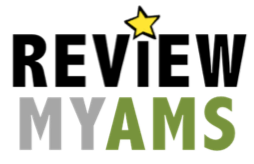
Guest post by BlueBolt
Many associations feel like their site search needs significant improvement. Typically, this comes from the fact that they have content living in multiple systems. These often include multiple websites, an Association Management System (AMS), a Learning Management System (LMS), a journal, discussion boards, video platform, and much more. With the data in all these different locations, any individual search is only able to provide results from one data source at a time. This means a visitor needs to perform multiple searches in different places to find what they are looking for. This can take quite a bit of time and be very frustrating for the person looking for information. This can easily lead to poor reviews and member dissatisfaction. Ultimately, member retention could suffer, all due to a poor search interface.
A Solution - Federated Search
The answer to this problem is to implement what is called a “federated search”. Federated search is also sometimes called a universal search. Federated search is a methodology for bringing all of the data together into one search index so a user can find everything they are looking for within the same interface. Usually, federated searches also provide facets and filters for the data to provide controls for the user to find the exact content that meets their needs. Such facets are critical to improving the satisfaction of the search.
For this all to work as expected, the data must be classified (or tagged) to power the facet capability. This is a concept called taxonomy management. Taxonomy management can be a time-consuming part of the administration process, where an employee manually reviews the individual content items and assigns categories or tags to each. Another advanced option for taxonomy management is to use machine learning to train an algorithm to do the work of classifying the content. Essentially letting the computer do the work of a human, much faster than a human could ever do it.
Implementing the Solution
The process of implementing a federated search includes a custom consulting effort that includes the following:
- Understanding all the data that needs to be brought together. This is usually a team of people asking questions
- Learning about the various content systems involved and determining the best way to pull the content into a federated search engine. The best-case scenario is that a system has an API which provides access to the content. For older systems, it may be necessary to write custom code or use website crawlers. Since associations tend to use many of the same kinds of systems, an experienced search provider can create re-usable “connectors” in order to save time and expense.
- Processes to gather and monitor the health of the data so it continually gets updated. A modern search platform will provide much of this functionality to help understand where data is not being updated or stale, including some ability to alert if there are failures.
- Consistently inserting that data into a common repository. The essence of federated search is to have one big data repository for all the data from the independent data sources.
- Working with the client to understand the user experience requirements such as the location of the search bar, prominence of the search, location of filters/facet options.
- The visual design of the user interface to make the search page look like it fits the style and design direction of the rest of the website.
- Ensuring that the data is delivered to the user on a continual basis without any delay or errors.
- Optimizing the search results for both the intent of the visitor (the best search result content possible) as well as for performance (the fastest search results possible).
All of this can happen within one system in an 8-12 week period assuming that the association’s staff has availability to make timely decisions during this timeline. Federated search can be implemented by search specialists from digital agencies such as BlueBolt.
Conclusion
Federated search solves a critical problem for associations with their site search by bringing all their content together. This should not only improve their member satisfaction with search, but it should also increase employee productivity. With employees not needing to go to multiple locations to find information, they should get more done in a shorter time. In addition, it is possible that members could discover additional content they didn’t realize existed. For instance, a member could find out that an association has a community platform such as Higher Logic by doing a search and having data from the community surfaced in the results. Because of these benefits, a federated search is a compelling solution for helping build a world class search interface for associations.
Association Site Search – How to Create an Amazing Search Experience
Want to learn more? Join BlueBolt and ReviewMyAMS on Wednesday, September 25th at 1:00 PM CDT for a free and informative webinar that will give you all of the steps necessary to get a great universal search for your organization and more.
Register here to reserve your spot - you won't want to miss this!
